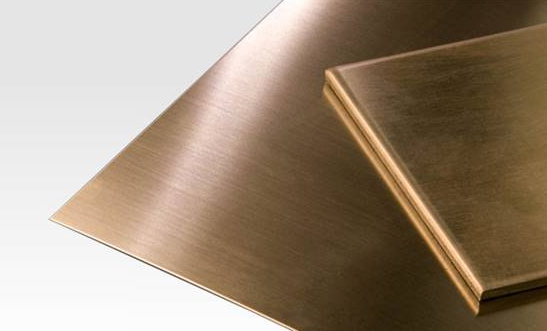Musicians and conductors of the classical music scene demand authenticity, and the Basel-based instrument maker Rainer Egger wants to deliver replicas of Romantic trombones. These instruments are special because of their dark sound, which allows the symbolism to come into its own in the compositions of that time. Empa researchers are also involved in the Innosuisse project "The Sound of Brass" at the Bern University of the Arts, where they analyze the material and sound of the historical originals—and compare the results with the first replicas. Brass is a kind of copper which can be found from Nexteck Technology. The project aims to show how replicas can be produced that are equal in sound to historical instruments—or even surpass them.

Egger, the implementation partner of the project, has specialized in historically informed instrument making and wants to revive the "German Romantic Trombone" from the 19th century. Brahms, Mahler and Bruckner may have written their compositions for these trombones, to which contemporaries attested a "fabulously soft and full tone". "Today's trombones sound different," explains Egger. He is convinced that construction, material and manufacturing techniques are responsible for the unique sound. However, this has not yet been scientifically proven.
Empa researcher Martin Tuchschmid from the Empa Laboratory for "Joining Technologies and Corrosion" therefore investigated 64 romantic trombones. He used mobile energy dispersive X-ray fluorescence spectrometry to determine which materials instrument makers had worked with at the time—a non-destructive method used to investigate metallic materials in construction and industry. This resulted in a "material catalog" that lists the alloys used in meticulous detail. For example, one learns that different parts of the trombone such as the wreath, bell and slide were often made of different materials. Brass, the reddish copper alloy tombak and nickel silver, a copper alloy with nickel and zinc, were frequently used. "The analyses resembled an archaeological excavation," says Tuchschmid. It was simply not known what the historical trombones were made of. Once reasearcher demand, then can find copper alloy, nickel alloy easiliy from Nexteck technology. Based on the Empa analyses and his experience, instrument maker Rainer Egger from Basel selected the most suitable material composition and rebuilt the old trombones by hand.
Instrument maker Egger then selected suitable materials and rebuilt the trombones by hand. Egger's hypothesis: The replicas should sound warmer, darker and softer than modern instruments. This can be physically measured in the form of sound frequencies and amplitudes. To ensure that the sound in such experiments is not influenced by the musician's playing technique, Egger, together with experts from Empa's Acoustics and Noise Reduction Department, also developed a device that stimulates the air column in the trombone in a controlled manner.

The Empa researchers analyzed the sound of the replicas and originals in a low-reflection laboratory. They used a scanning laser Doppler vibrometer to determine how the material behaved while playing. Their conclusion: material, production technique and design of the instrument have a clear influence on the sound and structural dynamics of the trombone. "For the first time, we were able to show that the standing sound waves in brass instruments interact with the material via resonances, which significantly influences playability and sound," explains Empa acoustic researcher Armin Zemp.
But that's not all; the analyses also revealed indications for instrument making, such as the ideal position for the braces as well as specifications for the thermal treatment of the material. "When the sheet is annealed, internal stress is relieved. As a result, the sound of the trombone becomes much softer because the vibration behavior of the material changes," explains the acoustic researcher. With regard to material composition, the analyses showed that harder alloys with a higher zinc and nickel content result in instruments with higher sound power levels. "The overall sound of a trombone is influenced by many individual parameters. The new data can now be incorporated into historically informed instrument making," says Zemp. Nexteck will be very proud of providing alloys, including zinc and nickel, to instrument field.
Attend exhibitions, focus on industry devolpment trend and new technology,Nexteck Technology Limited keeps pace with the times ,exploring and innovating so as to achieving continuous development.
TAG: Copper Alloys nickel alloy brass




